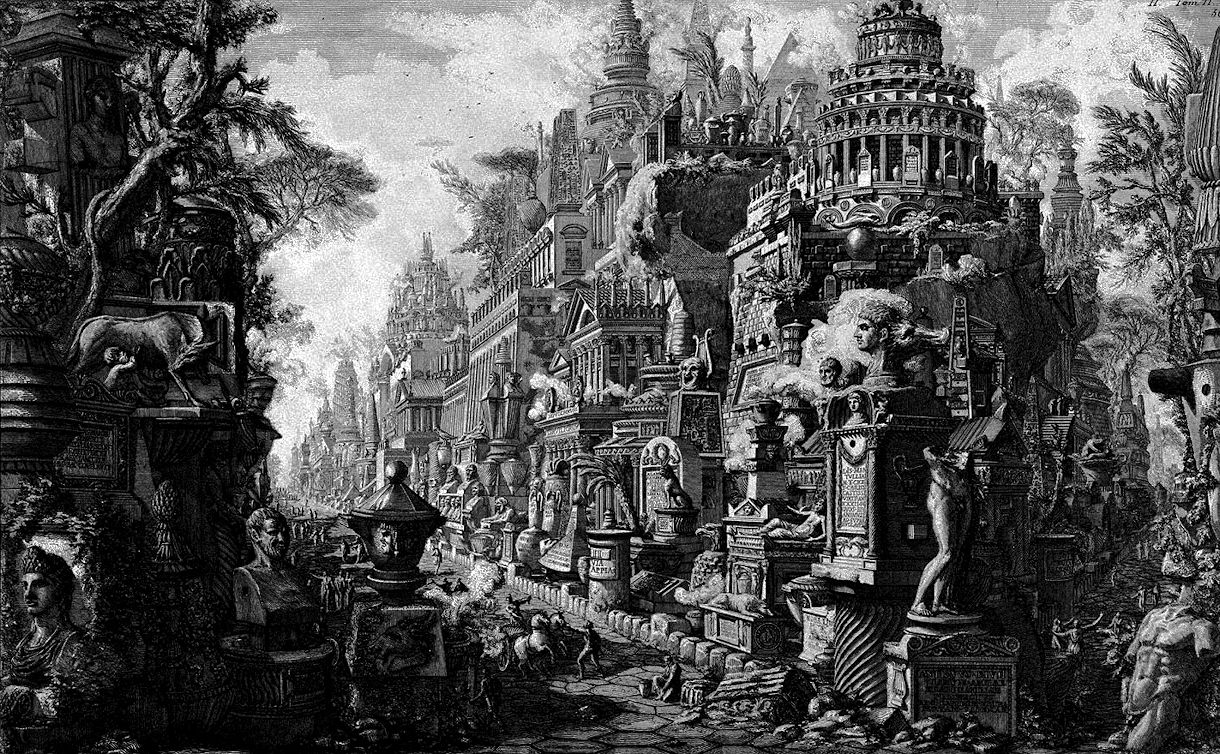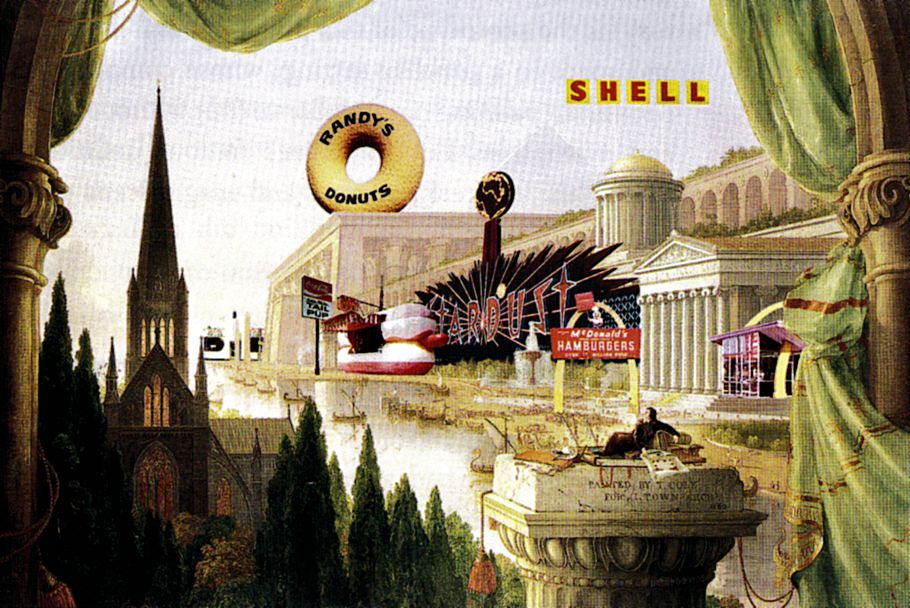hyper architecturism | 2017 |
Ancient intersection of the Via Appia and Via Ardeatina Giovanni Battista Piranesi Le Antichitŕ Romane II 1756
|
|
|
|
As the implicit mannerism acknowledged in Complexity and Contradiction has evolved in our work into an explicit Mannerism for today, so has the architecture of Signs and Symbols acknowledged in Learning from Las Vegas evolved (via Iconography and Electronics upon a Generic Architecture) into an architecture of communication for our time--an architecture explicitly embracing symbols and cultures that are both high and low, as demonstrated by our modification of Thomas Cole's Architect's Dream. (The original painting acknowledged architecture as form and symbol; the modified version acknowledges the cultures of architectures--high and low.) Here Architecture as Sign, rather than Architecture as Space. Here is architecture for an Information Age, rather than architecture for an Industrial Age.
|
www.quondam.com/59/5917o.htm | Quondam © 2020.11.03 |

